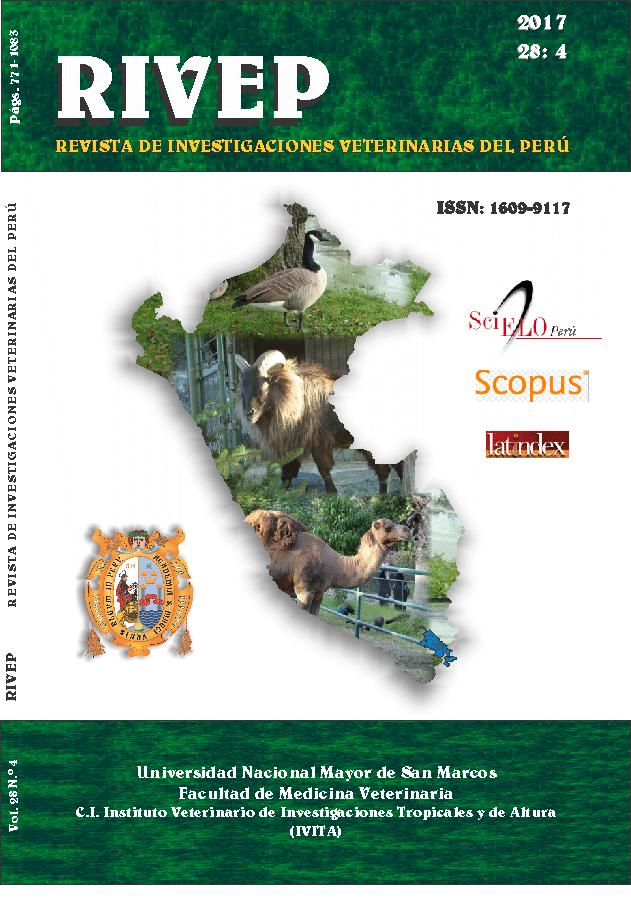Fiber characteristics of Huacaya alpaca at Cotaruse, Apurímac, Perú
DOI:
https://doi.org/10.15381/rivep.v28i4.13889Keywords:
alpaca, Huacaya, fibre characteristics, sex, age, colour, communityAbstract
The objective of the study was to establish the profile of the main physical characteristics of the alpaca fibre that can serve for a better commercialization and for breeding purposes. Measurements were made of 145 white and coloured fibre samples (brown and dark shaded) from five communities of the district of Cotaruse, Apurímac, Peru, using the ODFA 2000 equipment to determine fibre diameter (DF), coefficient of variation (CV[DF]), comfort factor (FC) and curvature index (CI). The effects of community, sex, age, fibre colour and body area of sampling on DF, CV(DF), FC and IC and their relationships were estimated. The mean fibre diameter (MDF) was affected by age (p<0.01) (values between 21.61 and 24.32 μm), by fibre colour (22.30, 23.81 and 26.69 μm for white, brown shaded and dark shaded, respectively) and by community (21.9 μm for Iscahuaca and 24.2 μm for San Miguel de Mestizas) and by sex (p<0.05), where the fibre in females were 1 ìm thinner than in males. However, there were no significant differences in the body area of sampling site. The CV(DF) showed significant differences due to age (p<0.01) and by sex and body area (p<0.05), but without differences by colour and community. The CF had significant differences (p<0.01) due to community and fibre colour, as well as by age, sex, and body area (p<0.05). The FC had significant differences due to the community (p<0.01), age, sex, and colour (p<0.05), but not by the sampling site. The MDF presented a high and negative correlation with FC (r=-0.99) and FC (r=-0.61) and FC had a positive correlation with IC (r=0.62). There was no clear definition of the appropriate sampling site, but it can be done at the age of 1 year. The alpacas of the district of Cotaruse, Apurímac, regardless of the colour of the fleece, produce a good quality of fibre and there is a great potential of variability for its genetic improvement.Downloads
Downloads
Published
Issue
Section
License
Copyright (c) 2017 V. Machaca Machaca, A.V. Bustinza Choque, F.A. Corredor Arizapana, V. Paucara Ocsa, E.E. Quispe Peña, R. Machaca Machaca

This work is licensed under a Creative Commons Attribution-NonCommercial-ShareAlike 4.0 International License.
AUTHORS RETAIN THEIR RIGHTS:
a. Authors retain their trade mark rights and patent, and also on any process or procedure described in the article.
b. Authors retain their right to share, copy, distribute, perform and publicly communicate their article (eg, to place their article in an institutional repository or publish it in a book), with an acknowledgment of its initial publication in the Revista de Investigaciones Veterinarias del Perú (RIVEP).
c. Authors retain theirs right to make a subsequent publication of their work, to use the article or any part thereof (eg a compilation of his papers, lecture notes, thesis, or a book), always indicating the source of publication (the originator of the work, journal, volume, number and date).










